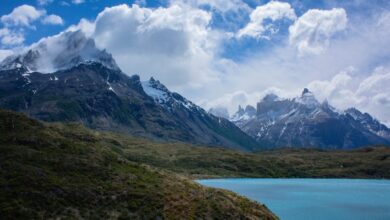Discovering Karingkarla: A Hidden Gem of Culture, Nature, and Adventure

Karingkarla, a name that resonates deeply in various cultural, ecological, and recreational contexts, is a lesser-known yet vibrant destination that invites visitors to explore its many facets. Whether you are drawn to its cultural significance, natural beauty, or the thrill of adventure, Karingkarla offers a unique and enriching experience. This article delves into the different aspects of Karingkarla, shedding light on its significance, natural environment, cultural heritage, and tourism potential.
Cultural Significance of Karingkarla
Karingkarla holds profound cultural significance, particularly for the Kaurna people of the Adelaide Plains in Australia. For the Kaurna, Karingkarla is not merely a place but a spiritual and geographical anchor. It embodies their deep connection to the land and is a repository of ancestral knowledge, cultural practices, and traditions. The Kaurna people view Karingkarla as a sacred space where stories, ceremonies, and cultural heritage have been preserved and passed down through generations. Efforts to protect and promote Karingkarla have recently intensified, focusing on cultural revival and environmental conservation.
Ecological and Agricultural Importance
In a different context, Karingkarla refers to a species of Garcinia, specifically Garcinia indica, found in the Western Ghats of India. This tropical fruit, known locally as kokum, is valued for its culinary applications and health advantages. Karingkarla thrives in the humid, tropical climate of the Western Ghats, where it has been cultivated for centuries. The fruit has a lot of HCA, or hydroxy citric acid and is known for its weight management properties and other health benefits. It plays a vital role in local agriculture, economy, and traditional medicine, making it an essential crop in the region.
Tourism and Adventure in Karingkarla
Karingkarla is also an intriguing travel destination, providing a fusion of cultural experiences and the beauty of nature. Visitors can immerse themselves in the untouched landscapes, participate in artistic workshops, and engage with the local community. Adventure enthusiasts will find a variety of activities to indulge in, including trekking through lush forests, discovering hidden waterfalls, and wildlife spotting. The region’s commitment to sustainable tourism ensures its natural and cultural heritage is conserved for future generations, making Karingkarla an ideal destination for those seeking adventure and tranquillity.
Culinary Delights
The culinary heritage of Karingkarla is another aspect that attracts visitors. The local cuisine reflects a blend of traditional flavours and modern influences, with dishes prepared using locally sourced ingredients. Kokum, or Karingkarla, is a staple in many traditional recipes, such as sol kadhi, a refreshing drink made with coconut milk and kokum extract. The unique tangy flavour of kokum adds a distinct taste to curries, chutneys, and beverages, making it a cherished ingredient in local cuisine.
Sustainable Tourism and Preservation Efforts
Preserving Karingkarla’s natural and cultural heritage is paramount to the local community. Sustainable tourism practices are actively promoted to protect the environment and maintain cultural landmarks. Visitors are requested to respect regional customs and contribute to conservation efforts. Initiatives such as eco-friendly accommodations, responsible waste management, and community-based tourism projects are in place to ensure that Karingkarla remains a beautiful and welcoming destination for future visitors.
Conclusion
Karingkarla is a destination that captivates visitors with its rich cultural heritage, ecological importance, and promise of adventure. Whether exploring the spiritual significance of the Kaurna people’s sacred lands, enjoying the natural beauty of the Western Ghats, or indulging in the local culinary delights, Karingkarla offers a unique and unforgettable experience. Its dedication to preserving and advancing its legacy of sustainable tourism ensures that Karingkarla remains an enchanting destination for years. A visit to Karingkarla is not just a trip but a journey into a world where culture, nature, and adventure intertwine to create lasting memories.
FAQs about Karingkarla
What is Karingkarla?
Karingkarla refers to a culturally and ecologically significant location with different meanings depending on the context. Australia is a sacred place for the Kaurna people, symbolizing their deep connection to the land. In India, Karingkarla refers to a species of Garcinia, specifically Garcinia indica, known for its health benefits and use in local cuisine.
Where is Karingkarla located?
Karingkarla is associated with the Adelaide Plains in Australia, which holds cultural significance for the Kaurna people. In India, it refers to regions within the Western Ghats where the Garcinia indica tree is cultivated.
What is the cultural significance of Karingkarla?
For the Kaurna people, Karingkarla is a sacred space representing their ancestral heritage, where traditions, ceremonies, and stories are preserved. It is a place of spiritual and cultural importance, deeply rooted in their identity.
What are the ecological features of Karingkarla in India?
Karingkarla, or Garcinia indica, thrives in tropical climates with high humidity and well-drained soils, particularly in the evergreen forests of the Western Ghats. It is valued for its fruit, which has various health benefits and culinary uses.
What activities can visitors enjoy in Karingkarla?
Visitors to Karingkarla can engage in trekking, wildlife spotting, cultural workshops, and stargazing. The area provides a unique fusion of scenic beauty and cultural experiences, making it an ideal destination for adventure enthusiasts and cultural explorers.
You May Also Read: Discovering Trangran: Vietnam’s Natural and Cultural Marvel




